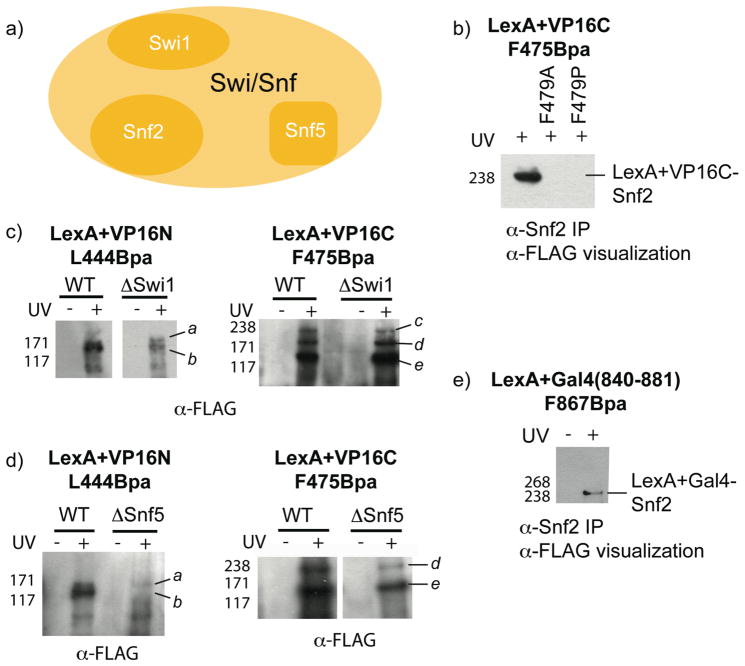Figure 4.
Analysis of VP16 crosslinking to the Swi/Snf coactivators, Snf2, Swi1 and Snf5. (a) The recruitment of the Swi/Snf chromatin remodeling complex by VP16 has been proposed to occur through interactions with the Snf2, Swi1 and Snf5 subunits although the direct binding partners in vivo have not been determined (17, 33, 34). (b) Live yeast cells expressing LexA+VP16C F475Bpa were irradiated with 365 nm light (30 minutes) and subsequently the cell lysates were immunoprecipitated with an antibody to Snf2 and resolved by Western blot (αFLAG), revealing a direct interaction between VP16C and endogenous Snf2. In line with previous biochemical experiments, when phenylalanine 479 in VP16C was mutated to either alanine or proline, crosslinking to Snf2 was abolished. (c,d) LexA+VP16C F475Bpa and LexA+VP16N L444Bpa were expressed in yeast strains lacking either Swi1 or Snf5 and the live yeast cells were irradiated with 365 nm light. Subsequently, cell lysates were immunoprecipitated (αLexA) and resolved by Western blot (αFLAG). In the individual blots for LexA+VP16N, the marks a and b denote crosslinked protein bands at the appropriate size for Swi1 and Snf5, respectively. In the individual blots for LexA+VP16C, the marks c, d, and e indicate bands at the appropriate size for Snf2, Swi1 and Snf5, respectively. (e) To test if Gal4 also contacts Snf2, crosslinking experiments were carried out with live yeast cells expressing LexA+Gal4 F867Bpa as in (b). The full Western blot of b) and e) can be found in Supplemental Figures S4 and S6, respectively.

